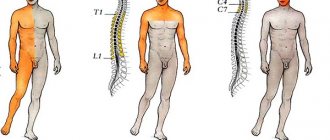Savant syndrome manifests itself with photographic memory and unusual abilities. From a medical point of view, this syndrome is not a disease; it is not described in ICD-10. However, savantism acts as a concomitant phenomenon in autism spectrum disorders and pathologies in the functioning of parts of the brain.
Most researchers agree that the phenomenon of savant syndrome is a genetic disease caused by a mutation on the Y chromosome, which is why there are more male savants than females.
What is savant syndrome
What is savantism? This is a feature of the brain that was studied and described by D. L. Down, and was interpreted by him as a person’s talent in a particular field of science or art. D. L. Down believed that the phenomenal development of the abilities of a person with this syndrome is due to the formation of a center of genius in his brain structures. It appears as a consequence of damage to the central nervous system.
Genius or giftedness is due to the dominance of the right hemisphere of the brain over the left, while in most people the left hemisphere of the brain is dominant.
In modern clinical psychology, it is widely believed that savantism is a type of autism. Like autism, savant syndrome is characterized by a very high level of memory development in a person, a heightened sense of time, and pronounced linguistic abilities. But the lack of balance in interhemispheric interaction does not allow such clients to successfully master the traditional educational program and socialize.
In most cases, the effect of savantism is a congenital feature, but there are cases of the syndrome developing in humans as a result of brain injury.
Symptoms and features of savantism
People with savant syndrome exhibit the following characteristics:
- they have very low rates of intellectual development due to disorders in the functioning of the brain;
- lagging behind peers in physical development;
- deviations in mental development;
- autism spectrum disorders;
- their stock of ideas about the world around them is very small;
- their self-care skills are poorly developed;
- they avoid eye contact and body touch;
- movement disorders;
- pathological introversion;
- the need for communication and interaction is low;
- poor speech development, expressed in a violation of the letter-syllable structure of words;
- they have speed reading, the ability to extremely quickly perform complex arithmetic operations in their minds;
- they have difficulty mastering writing;
- they have a photographic memory;
- They are characterized by a passion for music or painting.
The first signs of savantism
The first signs of savantism are a child’s pronounced passion for some area of activity during early childhood. People with savant syndrome can memorize a fairy tale at the age of 2 after listening to it once, and independently learn to perform mathematical operations in their minds.
But the formation of self-service and social orientation skills occurs with great difficulty. For many of them, dressing or eating independently poses serious difficulties.
An autistic person with savant syndrome in infancy reacts painfully to adults’ attempts to establish emotional contact with him.
Forms of savant syndrome
Savant syndrome in humans manifests itself in different forms:
- Analyzer form. With this type of disorder, people have a heightened sense of smell, ultra-clear vision and very acute hearing. Their analyzer sensitivity thresholds allow them to acutely sense odors, hear any rustle and see everything in the smallest detail.
- Mnemonic form. This type of disease manifests itself in the patient’s ability to quickly remember various types of information. At the same time, the material is remembered so firmly that a person, without referring to it for a long time, can easily reproduce what he has once memorized.
- Musical form. In this case, a person has an absolute ear for music; he can independently learn to play various musical instruments in childhood. Clinical studies have found that people with this form of savant syndrome can play a tune they heard on the radio on a musical instrument the first time they try it.
- Figurative form. If a person with savant syndrome has a figurative form of pathology, then he draws beautifully and can sculpt a completely identical sculpture by a famous master. This category of patients, engaged in visual arts, produce unusually realistic works of art.
- Mathematical form. People with this form of savant syndrome know how to multiply multidigit numbers. They perform mental calculations in a few seconds.
- Linguistic form. People with this type of savantism can quickly learn any foreign language and speak it fluently, as if in their native language. This type of brain pathology is less common than others.
Treatment
Art for Savant syndrome
Behavioral and drug therapy is individual in all cases. In most cases, drug treatment is not used. It is indicated only in the presence of concomitant diseases, for example: epilepsy, depressive disorders or sleep disorders. Then psychostimulants, neuroleptics, and vitamin therapy are prescribed.
The main task is the adaptation of a person in society, improving his emotional and physical state. Parents and teachers should help in the development and preservation of unique abilities, then the savant can truly be realized in life.
Speech development classes, fairy tale therapy, listening to classical music and playing musical instruments will be beneficial. For severe motor dysfunctions, physical therapy and massage are indicated.
How to get rid
It is impossible to completely get rid of the disease.
Timely correction by a psychologist or psychiatrist shows good results. Psychological assistance makes it possible to feel confident among people, interact with them, and find your place in society.
It is worth noting that the introduction of savants into society should be done carefully and gradually. So as not to hinder the development of talents, but at the same time give a sense of significance.
Prevention
Prevention of pathology is not provided, since its exact causes are not known.
Experts advise undergoing a full examination before planning a child and giving up bad habits. During pregnancy, regularly visit a doctor, undergo the necessary examinations to reduce the risk of premature birth and identify fetal development abnormalities in the early stages.
Reasons for the emergence of savantism
Scientists, studying people with genius, were looking for an answer to the question: what kind of disease is savant syndrome? While studying the biographies of famous people with savant syndrome, scientists were able to compile a list of reasons that provoke the formation of an island of genius in the brain:
- Genetic predisposition. The results of clinical studies show that the disease is inherited, especially if the parents are over 40 years old. This means that if one of the parents is a savant, then, most likely, the child of this couple will also have this feature of brain function.
- Premature birth. Statistics show that many famous people with savant syndrome were born prematurely. Their weight was below normal.
- Brain injuries in the postnatal period. Some people develop language, visual, or mathematical abilities after a traumatic brain injury, such as in a car accident. This reason is responsible for the formation of acquired savant syndrome.
- Inflammatory process in the brain tissue of the fetus during intrauterine development.
- Vitamin D deficiency in the fetus during intrauterine development. Lack of vitamins is considered in medicine to be the main cause of genetic mutations. This means that not only savant syndrome, but also other intellectual problems can be acquired by a child whose parents live in an environmentally unfavorable area.
- The occurrence of savant syndrome against the background of autism, Down syndrome, mental retardation, and mental disorders.
Nonspecific symptoms of autism
Autistic disorders always affect social interactions, language and behavior, and are often accompanied by other disorders in the body that can help recognize the disease:
- Digestive disorders – People with autism suffer from diarrhea and/or prolonged constipation due to damage to the intestinal mucosa and hypertrophy of abnormal bacterial flora.
- Weakened immunity – autistic children are prone to allergies and various types of infections due to damage to the immune system and imbalance of T cells,
- Deficiency of vitamins and elements - often children with autism tend to limit their menu to a few dishes; there is a lack of vitamins C, B6, B12, A, E and elements - magnesium, selenium, zinc and chromium,
- Heavy metal poisoning – there is a weakening of the ability to detoxify.
Risk factors
It is believed that risk factors for the formation of savant syndrome are:
- the baby is born before the 35th week of pregnancy;
- birth injury to the fetus, as a result of which resuscitation measures were carried out;
- fetal weight at birth is less than 2500 g;
- abnormal physiological structure of the brain, lack of a clear division of the brain into 2 hemispheres;
- brain swelling resulting from a blow to the head;
- the effects of radiation on the body;
- presence of autism spectrum disorder.
Diagnosis and treatment of the syndrome
The main diagnostic method for this disease is MRI and CT, an encephalogram of not only the patient himself, but also his closest relatives. To determine the form of the disease, intelligence tests are used, as well as techniques that allow one to assess the emotional-volitional sphere of the individual. This is necessary in order to exclude other pathologies of intellectual and mental development.
Clinical psychologists and psychiatrists treat savantism. At the same time, attention is drawn to the fact that there is no cure for this disease, so the goal of therapy is to teach the child to communicate while preserving his talents.
The main methods of correction are fairy tale therapy, art therapy, massage, and physiotherapy. If necessary, a speech therapist works with patients, correcting defects in sound pronunciation.
Complications
Savant syndrome is believed to be a disorder that does not in itself cause serious harm to a person. However, it can provoke negative consequences. Common complications of savantism are:
- mental disorders, depression;
- difficulties of interaction and socialization;
- suicidal tendencies.
The importance of differential diagnosis
When identifying autism, it is important to distinguish it from other disorders, such as hearing or vision problems, developmental delays, or speech impairment. There are certain diseases that can resemble autism, so they need to be ruled out by having your baby tested. This may include:
- blood and urine test
- ENT tests – to rule out speech problems
- test for toxoplasmosis and cytomegalovirus
- hearing test – to rule out hearing problems,
- neurological tests – performed to rule out other neurological disorders
- ophthalmological examinations - to exclude vision problems,
- genetic or metabolic testing – often performed by parents to rule out a hereditary factor.
Famous people with savant syndrome
Savant syndrome has been diagnosed in such famous people as:
- Kim Pik, who was born with this pathology. He had a unique ability: he read 2 pages of a book at the same time. He read one page with his left eye, and the second with his right. At the same time, Kim Pik remembers the contents of all the books he has read. In addition, he amazed his contemporaries with his computing skills and ability to determine the day of the week of a given date. The type of phenomenon of this savant is shown in the film “Rain Man”.
- Stephen Wiltshirk is a man whose savantism was combined with autism. However, this did not stop him from becoming a talented landscape artist and architect. Phenomenal memory allows one to remember the smallest details of a drawing or painting, even if he only glanced at the sheet.
- Derek Paravicini was a famous blind savant musician. He accurately reproduced the melodies he once heard. This patient also had a concomitant pathology – echolalia. This man's intelligence level corresponded to the age of a 4-year-old child, but this did not prevent him from gaining worldwide recognition in jazz.
- Daniel Tammet is a savant who suffers from epilepsy and autism. He became famous for his ability to perform complex mathematical calculations in his head. In addition, Tammet could learn any foreign language in a week.
- Leslie Lemke is a pianist with savant syndrome, who in addition to this illness was diagnosed with blindness and cerebral palsy. He was born with congenital glaucoma, due to which he became blind. Already blind, Lemke mastered playing the piano, learning to select the right notes for famous melodies by ear. Leslie's performances with works of her own composition attract entire concert halls of enthusiastic spectators.
- Ben Underwood is a savant who navigates space using very acute hearing: he snaps his fingers and judges the location of objects in a room by the sound reflected from them. Savantism in this young man developed as a compensatory mechanism as a result of injury to the visual analyzer.
Osteopathy for autism
Osteopathy is a safe, gentle and effective form of treatment for children of all ages, including those from several weeks old. It is important to understand that childbirth is a significant stressor for a newborn baby. When a newborn is born, adrenaline levels are 20 times higher than in an adult during a heart attack. During childbirth, enormous compressive forces are exerted on the baby's body as the uterus pushes it toward the birth canal. In this case, the newborn’s head is under great pressure, especially if forceps or a vacuum pump are used, if the baby is large or there is a multiple pregnancy.
All this increases the risk of traumatizing the child during childbirth, and as a result, becomes a provoking factor for autism if there is a genetic predisposition. In such cases, we recommend using the help of experienced osteopaths. Craniosacral therapy (cranial osteopathy) involves very gentle manipulation and compression of the skull to relax the connective tissue structure. The therapy improves blood circulation, blood supply to organs and the functioning of the nervous system. Osteopathic treatment in infants is gentle and painless, but nevertheless has significant effectiveness. The osteopath uses manual methods with which he causes profound changes in the child’s body. Thanks to this treatment, the musculoskeletal system, nervous, digestive and immune systems work in the most optimal manner.
It is also worth noting the high sensitivity of autistic children to touch, which leads to the formation of emotional stress. Unblocking this tension can significantly improve behavioral skills. If autism is not associated with developmental delays, you can expect very noticeable results.
My recommendations
The main difficulty that parents of savant children face is teaching them self-care and communication skills. They do not perceive verbal instructions from adults. I recommend that parents of such children use alternative methods of communication: pictures, diagrams, sheets placed in prominent places with a graphic representation of the sequence of actions. The savant perceives visual images better than oral speech.
Psychocorrectional work with such children is focused on helping them with socialization. Such children need to be taught to live among people, come into contact with them, and carry out joint activities. A serious obstacle in this process is their poor development of the emotional-volitional sphere.
I noted that art therapeutic technologies fully correspond to the individual characteristics of children with this illness.
In addition to correcting the emotional-volitional sphere, I consider it necessary to develop the logical thinking of these people and expand their ideas about the world around them. Their heads contain multi-volume encyclopedic knowledge, which they absolutely do not know how to use. We need to help them apply their theoretical basis in life.
It is possible to achieve lasting positive dynamics in the psychocorrection of savantism only through long-term work together with a defectologist.








